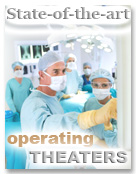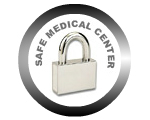
- RP Specialized in:
- Plastic Surgery in Argentina
- Treatments
- Breast Implant Surgery
- Rhinoplasty
- Vaser® Lipo System
- Liposuction
- Eyelid Surgery
- Tummy Tuck
- Breast Lift
- Facelift
- Lifting the Tip of the Nose
- Breast Reduction
- Double Chin Surgery
- Eye Shaping Surgery
- Chin Augmentation
- Ear Surgery
- Mentoplasty
- Eyebrow Lift
- Mini Facelift
- Cantopexy
- Deep Chemical Peel - Resurfacing
- Plastic Surgery Information
- Plastic Surgery Costs
- Cosmetic Procedures
- Hair Transplant
- Dermatology
- Phlebology
- Related information
- Related Links
- Web Directories
- Free Quotation
- Webmaster
» Tummy Tuck, Abdominoplasty - Plastic surgery in Argentina
Table of Contents:
- » Pictures Before and After
- » General Information: risks, anesthesia, recovery, pre-operative tests, etc.
- » How to get a quote - Photographs necessary - Requirements.
"Privilege safety issues over cost savings. Your health comes first. Go for quality."
» General Information: risks, anesthesia, recovery, pre-operative tests:
What are the options to correct a prominent abdomen (tummy)?
Abdominoplasty or Abdominal Dermolipectomy (Dermolipectomy means "skin removal", in this case, the saggy excess of skin and fat) is indicated to remove the fat and the skin flap placed over the pubis. When the fat deposits and excess skin are limited to the area below the navel, a less complex procedure may be performed, called Partial Abdominoplasty or Mini Tummy-Tuck. Sometimes, this procedure may be performed on an outpatient basis and does not require hospitalization. If the abdomen presents any scars (i.e. a C-section) Plastic Surgery will be performed to correct the scars during the same procedure by tightening the abdomen, thus making them imperceptible.
A prominent abdomen ("tummy") can only be successfully treated by Liposculpting if there is no excess skin in the form of a sagging flap. In order to obtain good results, the skin must be elastic enough. The purpose of this surgery is to remove localized pockets of excess fat that are resistant to diet or exercise by means of thin tubes or cannulas. This procedure can be performed under local or general anesthesia. An abdominal snug elastic garment should be worn for 2 or 3 weeks. This surgical procedure is called Abdominal Liposuction.
Sometimes, in addition to excess skin, deposits of excess fat should be removed from the abdomen by means of liposuction. In such a case, two surgical procedures should be performed simultaneously (Abdominal Dermolipectomy in conjunction with Abdomen Liposuction) to achieve better results.
Important:There are no specific surgical procedures indicated to correct stretchmarks. Dermolipectomy aims at removing excess skin from flap placed from the navel to the pubis. Stretchmarks found below the navel will be removed, while those placed above the navel will not be removed; only their appearance will be improved and they will be moved and placed below the navel.
What is the surgery like?
Abdominal Dermolipectomy is a major surgical procedure intended to tighten the skin on the abdomen (or on other body areas, such as excess or loose skin on arms and thighs) and to remove excess or loose skin under the navel. If the abdomen presents any scars (for example, a C-section), reconstructive plastic surgery on that scar and dermolipectomy will be performed simultaneously. If stretchmarks are found on the area to be treated, their appearance will be improved as a result of the tightening of the skin, but they cannot be removed completely. In most cases, this surgical procedure is performed under general anesthesia and requires 24-hour hospitalization.
Are there any risks? Which complications may arise?
All surgeries involve Risks:
By giving you all the information you need to make a decision, including information on the risks involved, we show our respect for you and allow you to have the last say in all matters concerning your surgery. We also believe that this speaks volumes about RP Medical Center, about who we are and how we work. It is our responsibility to provide you with all necessary information. We consider that Quality goes hand-in-hand with Responsibility. All patients have a right to be explained how the surgical procedure will be performed, together with the potential risks and complications (which are not caused by a Physician’s errors or malpractice, but which derive from the surgery itself or cannot be anticipated), and the advantages and disadvantages of certain techniques, so that they can think it over and make a balance before making any final decision.
Any surgical procedure has risks (whether an optional surgery, which you choose to undergo, or an emergency surgery); some risks are common to all surgical procedures and others are specific to each type of surgery. No surgery is exempt from risk. A plastic surgery is, after all, a surgery. Risks (each under different incidence percentages; see below) range from post-surgery complications which can be secondarily solved (bad scarring, seroma, skin necrosis, etc.) to severe and fatal complications such as reactions to anesthesia, pulmonary embolism (blood clots or "small blood balls" which could migrate to the heart and block the pulmonary artery causing severe injuries or even death), among others.
In 1997, the results of a survey were disclosed in the United States, based on 400,675 surgical procedures involving Plastic Surgery and Surgical Repair, where 7 deaths were found. The rate of severe complications (hypotension, hematoma, infection, hypertension episodes, sepsis) was 0.47% (1 case every 230 patients). One death occurred every 57,000 patients, that is, a mortality rate of 0.0017%; slightly less than 1 death every 57,000 patients. The survey documented the approximate safety level for plastic surgeries conducted by certified plastic surgeons in authorized facilities in the US, during those years. Another survey conducted in the United States (from 1994 through 1998) further accounted for deaths occurred after Liposuctions. Survey findings reported one death every 5,000 patients, which represents a mortality rate of 0.02 % and 20 deaths every 100,000 liposuctions. The main cause of death was pulmonary thromboembolism.
In addition to the complications mentioned above, post-operative abdominoplasty complications may include infection and embolism or even thromboembolism (one of the most serious complications). Infection can be treated with drainage and antibiotics. You can minimize the risk of embolism or thromboembolism by moving around as soon after the surgery as possible.
Risks must be minimized by taking all appropriate preventive measures and complying with certain rules and requirements, including the requirement for pre-surgery tests, pre-operative and post-operative indications, the practice of surgeries in the proper facilities (which must be fully-equipped to cope with any inconveniences), patients’ full medical history, and their compliance with the Physicians’ guidelines after the surgery. It should be recalled that complications and risks may arise even where all precautions were taken and even if the patient is healthy. Given that these complications are not predictable, they may affect the patients of even the best surgeons in any country of the world, despite any precautions taken to reduce potential risks.
Who are the best candidates?
The best candidates for abdominoplasty are preferably men or women who are in good shape and not overweight, but who are bothered by a large fat deposit or loose abdominal skin. The surgery is particularly helpful to women who, through multiple pregnancies, have stretched their abdominal muscles and skin beyond the point where they can return to normal by taking exercise.
Patients who intend to lose a lot of weight should postpone this surgery. Keep in mind that abdominoplasty is not a proper surgical procedure for losing weight or for losing extra pounds. Women planning future pregnancies should also wait, as muscles in the abdomen that are tightened during surgery can separate again during pregnancy, thus spoiling the outcomes of this type of surgery.
What will scars be like?
A horizontal scar is placed above pubic hair, and it can be concealed under your underwear. The surgeon will make a long incision from hipbone to hipbone, just above the pubic area. A second, shorter incision is made around the navel. With partial abdominoplasty, the incision is much shorter and the navel need not be moved. The scars will subside and become clearer after one year. They will not show under bathing suits.
What precautions should I take after surgery? When can I go back to normal life?
After care
Although you will not be able to walk on a completely erect position, you should start walking as soon as possible. Recovery takes from 7 to 15 days after surgery. You must also wear a snug elastic garment for 2 to 3 weeks. The first follow-up checks are vitally important during the first 7 days following surgery. Stitches will be removed gradually from the 7th day onwards, depending on the case. All remaining stitches will be removed on the 10th day, depending on the patient’s evolution. You will be required to quit smoking 1 or 2 months before the surgery (smoking patients have an increased risk of skin suffering in the area being operated on in addition to a delayed healing of scars). It may take you weeks or even months to feel like your old self again. Most people go back to work after 2 to 4 weeks.
If I do not live in the City of Buenos Aires: How long should I stay approximately?
You will need to stay in Buenos Aires for 13 nights and 14 days. If you agree to have the sutures removed by a trusted physician in your city of residence, the total stay will be of about 9 days, as long as you recover normally during the post-operative period.
Which are the required pre-surgical tests?
It is necessary to undergo the following pre-surgical tests within 1 month before the date of surgery:
- I. Blood test: hemogram, blood sugar, creatinin, hepatogram, clotting time, serology HIV.
- II. Cardiology: ECG and surgical risk.
Mandatory pre-surgical instructions:
- Put off smoking 1 or 2 months in advance (all smoking patients have an increased risk of skin suffering in the area being operated on and of a delayed healing of scars).
- Discontinue Aspirin intake (Acetyl salicylic acid) 1 month in advance.
- Discontinue Vitamin E intake 1 month in advance.
- Apply anti tetanus vaccine.
- Anticoagulated Patients: Consult your hematologist to change treatment schedule.
» How to get a quote - Photographs necessary to undergo a surgery - Stay - Requirements:
» To request the right quote and provide all necessary information, go to: "How to travel to undergo a surgery", and read "Step No. 1", "Make arrangements for a surgery by following these easy steps".
» Photographs required for Abdominoplasty: Please send 3 photographs taken from the armpits (including breasts) down to the knees: take one frontal photograph, one of your right profile and one from behind. As regards dermolipectomy performed on other parts of your body, please send frontal and side photographs of the areas you wish to remove or lift, together with a description of the areas to be treated.
» Days of stay for Abdominoplasty: 13 nights, 14 days. For further information on stay days, minimum stay, and schedule, among other matters, go to "How to travel to undergo a surgery" , read "Step No. 3", " Make arrangements for a surgery by following these easy steps."
» Hospitalization: 1-day hospitalization at the clinic is required.
» Abdominoplasty Requirements: We should keep in mind that Abdominoplasty is not a proper surgical procedure for losing weight or for losing extra pounds. It does not substitute diet and exercise. The best candidates are people who are in relatively good shape but are bothered by a large fat deposit or slack abdominal skin on their abdomen. In order to be eligible for this surgery, you should not be overweight. If a patient has recently lost weight, then she/he must be able to keep fit through time. An overweight patient should lose weight before the surgery and be able to keep excess weight off. Before undergoing abdominoplasty, patients must be certain that they can maintain their normal weight after the surgery. Otherwise, if the patient gains too much weight, the outcomes of this surgical procedure will be spoiled. You should also quit smoking one month before the surgery, since smokers have an increased risk of a delayed healing of scars. Smoking inhibits blood flow to the skin, which may interfere with the healing of incision areas, thus producing small holes in the skin (ulcers).
» Why are photographs necessary?
Not only are photographs necessary to avoid paying for an unnecessary and more expensive surgical procedure, but also to determine whether the surgery for which you have come to us is the best type of surgery for you. Photographs are essential for our Physicians to analyze your case, to know how to proceed and offer you the personalized treatment that sets us apart. Your photographs also enable us to make a more precise quote.









